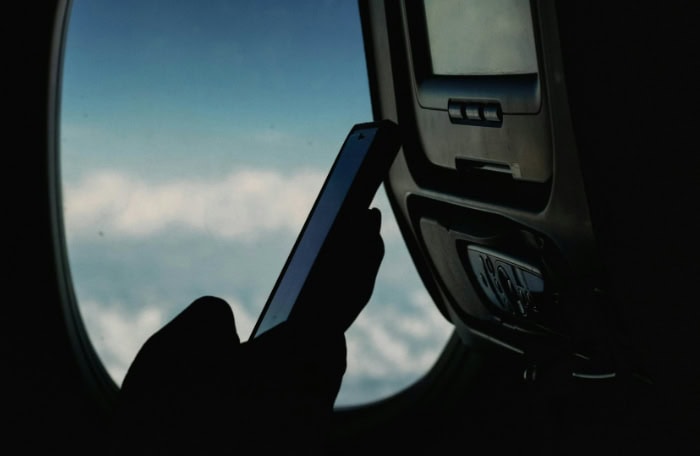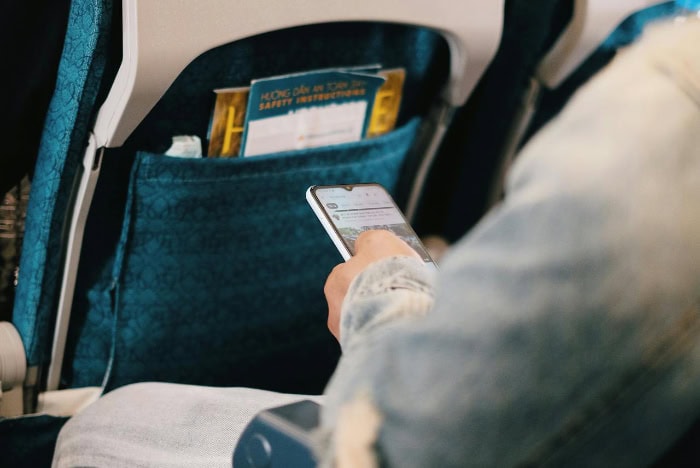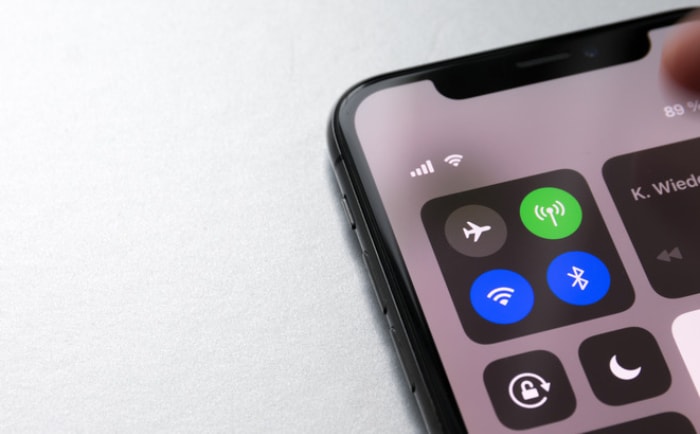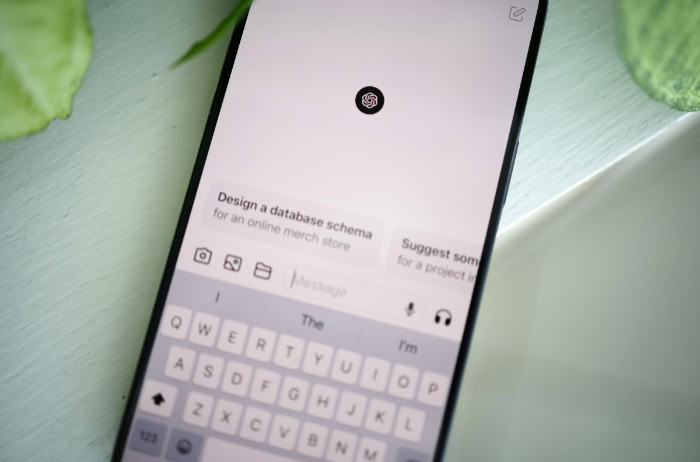What Is Airplane Mode? More Than Just for Flights

You probably flip on airplane mode without a second thought before your flight departs, but its usefulness extends well beyond the runway. This single setting is a surprisingly versatile tool for everyday life.
It can be your best defense against unexpected international roaming fees, a secret weapon for faster battery charging, and an essential aid for reclaiming your focus from a flood of notifications. By temporarily severing connections to cellular, Wi-Fi, and Bluetooth networks, you gain a new level of control over your device.
It is a simple function with practical benefits for saving power, improving privacy, and finding moments of quiet in a constantly connected existence.
Defining Airplane Mode
Airplane mode, sometimes called flight mode, is a setting on smartphones, tablets, and laptops that suspends the device's radio-frequency signal transmissions. Its main function is to disable all wireless communications to comply with aviation safety regulations.
Activating this mode instantly turns off cellular data, voice, Wi-Fi, and Bluetooth connections, preventing the device from sending or receiving signals that could potentially interfere with aircraft systems.
Origins in Aviation Safety
The feature was developed in response to longstanding airline prohibitions against using devices that emit radio-frequency signals during flight. Regulatory bodies, including the Federal Communications Commission (FCC) with its 1991 ban on airborne cell phone use, were concerned that these signals could disrupt a plane's sensitive communication and navigation equipment.
Airplane mode offered a practical solution, allowing passengers to continue using their electronics for offline activities without violating safety protocols.
Modern Everyday Applications
While its original purpose was tied to air travel, airplane mode has become a valuable tool for managing device performance and connectivity in various situations on the ground. People now use it to conserve battery life, as wireless radios consume significant power searching for signals.
It also serves as a simple method to block calls and notifications for a distraction-free environment during work, meetings, or sleep. The function has evolved from a specific safety requirement into a general utility for controlling a device's behavior.
How It Works

When you activate airplane mode, your device systematically shuts down its wireless radios to stop all outgoing and incoming signal transmissions. This function acts as a master switch for connectivity, but it operates with some flexibility, allowing you to use certain features while others remain disabled.
Disconnecting Cellular Services
The most immediate effect of airplane mode is the suspension of all cellular services. Your device stops communicating with cell towers, meaning you cannot make or receive phone calls, send or receive SMS and MMS text messages, or access the internet using mobile data.
This complete cellular shutdown is the primary mechanism that ensures compliance with aviation regulations by eliminating the radio frequencies associated with cellular networks.
Controlling Wi-Fi and Bluetooth
By default, enabling airplane mode also deactivates your device's Wi-Fi and Bluetooth radios. However, most modern operating systems on smartphones and laptops allow you to re-enable them independently without turning off airplane mode itself.
This flexibility is what permits you to connect to in-flight Wi-Fi networks or use Bluetooth accessories like headphones or keyboards while still keeping your cellular connection disabled, which is a common practice on many flights today.
Impact on GPS Functionality
The behavior of GPS in airplane mode can vary. A device's GPS receiver functions by passively listening for signals from satellites and does not typically transmit its own signal, so airplane mode may not disable it directly.
You might still be able to use offline maps to see your location. However, many devices use Assisted GPS (A-GPS), which relies on cellular data to determine your location faster and more accurately.
Because airplane mode cuts off mobile data, A-GPS services will not work, which can result in slower or less precise location tracking.
Common Scenarios for Use
Although its name points to a single purpose, airplane mode is a feature that people find useful in many situations, both in the air and on the ground. Its applications have expanded far beyond aviation, making it a go-to setting for managing connectivity, saving money, and reducing distractions in daily life.
During Air Travel
The most well-known application is for complying with airline regulations. Passengers are required to disable cellular transmissions to prevent any potential interference with the aircraft's systems.
Activating airplane mode accomplishes this instantly. Modern use has evolved, as most airlines now permit the use of in-flight Wi-Fi and Bluetooth.
After enabling airplane mode, you can manually turn Wi-Fi or Bluetooth back on to connect to the plane’s network or use wireless headphones, all while the cellular radio remains safely inactive.
Traveling Internationally
For international travelers, airplane mode is an essential tool for avoiding costly roaming charges. Upon landing in another country, enabling this mode prevents your phone from automatically connecting to a foreign cellular network and using data or making calls at a high rate.
It gives you control, allowing you to find a Wi-Fi hotspot or wait until you have installed a local SIM card or activated an eSIM plan before turning your cellular connection back on.
Enhancing Focus and Minimizing Distractions
In everyday life, airplane mode serves as a powerful switch for creating an interruption-free environment. When you need to concentrate on work, study, or get a good night's sleep, activating it blocks all incoming calls, text messages, and app notifications.
It effectively silences the constant stream of digital noise, allowing you to focus without your device pulling your attention away. It is also helpful for parents who let their children play games on a phone, as it prevents accidental calls or online purchases.
Advantages and Drawbacks

Using airplane mode involves a straightforward trade-off: you sacrifice immediate connectivity for a range of practical benefits. While its primary function is to disconnect you, the advantages it offers in battery conservation, privacy, and focus are significant.
However, it is important to be aware of the inherent limitations that come with being completely offline.
Conserving Power and Speeding Up Charges
One of the most appreciated benefits of airplane mode is its effect on battery life. A device's wireless radios, particularly the cellular one, consume a great deal of power as they constantly search for and maintain network connections.
By disabling these radios, you drastically reduce battery drain, which is especially useful when your power is low and there is no charger nearby. This reduction in power consumption also allows your device to charge much faster, as less energy is being used while it is plugged in.
Improving Privacy and Focus
Airplane mode is an effective tool for creating a private, distraction-free bubble. Activating it instantly blocks all incoming calls, messages, and app notifications, giving you an uninterrupted period to work, read, or rest.
This function also enhances privacy by making your device undiscoverable via Bluetooth and severing its connection to cellular and Wi-Fi networks. Additionally, it prevents accidental data usage, protecting you from unintended charges if you are near your monthly data limit or traveling without an international plan.
The Inevitable Disconnection
The main drawback of airplane mode is its most obvious one: the inability to communicate through traditional cellular channels. You cannot receive real-time phone calls or SMS texts, which could lead to missed emergencies or urgent messages.
While you can often reconnect to Wi-Fi to use internet-based messaging apps or Wi-Fi calling, access to a reliable network is not always guaranteed. This potential for isolation means you must consciously choose when it is safe and appropriate to be completely disconnected from cellular services.
Activating Airplane Mode on Your Device
While airplane mode is a standard feature on nearly all modern personal electronics, the specific steps to turn it on and customize its behavior can differ from one device to another. The process is generally straightforward, but knowing the nuances of your particular operating system can help you manage your connections more efficiently.
Using Airplane Mode on iOS
On an iPhone or iPad, the quickest way to activate airplane mode is through the Control Center. You can access it by swiping down from the top-right corner of the screen on newer models or up from the bottom on older ones.
Tapping the airplane icon will turn the mode on, disabling cellular, Wi-Fi, and Bluetooth. To reconnect to Wi-Fi or Bluetooth, you can tap their respective icons again within the Control Center without leaving airplane mode.
Alternatively, you can find the same toggle switch at the top of the main Settings app.
Enabling on Android Devices
Android users can typically find the airplane mode toggle in the quick settings panel, which is accessed by swiping down from the top of the screen. The icon, usually an airplane, can be tapped to enable or disable the mode.
Since Android's interface can be customized by manufacturers like Samsung, Google, or OnePlus, the exact appearance of the quick settings panel may vary. However, the functionality remains consistent.
Similar to iOS, you can usually long-press the Wi-Fi or Bluetooth icons or re-tap them to turn them back on individually while airplane mode is active.
Airplane Mode on Laptops and Wearables
Laptops running Windows or macOS also include an airplane mode. On Windows, you can typically find it by clicking the network icon in the taskbar.
On macOS, you would turn off Wi-Fi and Bluetooth individually through the menu bar icons. Wearable devices, such as an Apple Watch or Galaxy Watch, often mirror the airplane mode status of their paired smartphone.
You can also enable it directly on the watch itself, usually through a control panel similar to the one on phones, which is useful for saving battery or when you are required to power down all transmissions.
Conclusion
Airplane mode began as a simple safety precaution for air travel, but it has grown into a much more versatile feature for daily device management. It offers a simple and effective way to control your device’s most power-hungry functions.
From preserving your last bit of battery and accelerating charging times to preventing expensive roaming fees while traveling abroad, its practical uses are numerous. The ability to disconnect from a constant stream of notifications also provides a welcome opportunity for uninterrupted focus or rest.
By choosing to temporarily sever your connections, you can manage your digital life more intentionally. It is a small but powerful tool that puts control back in your hands, allowing you to balance the demands of constant connectivity with the need for power conservation, privacy, and peace of mind.


